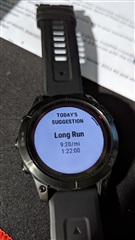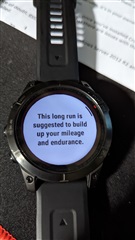Hi,
I'm an amateur runner (perhaps still wanna-be amateur runner) and as many of us, switching from my old Fenix 5 to my new Fenix 7 I got the new metrics, including the revamped training status that gives indications about the balance between the various load focuses derived from each run.
At the beginning I got plenty of "Low Aerobic Shortage" so I came here in the forum, read a lot about it and fixed the thing. This in turn actually changed my way of seeing the running sessions making me actually discovering that I was running simply wrong: always freely running at about HR3 and often HR4 zones only, which lead me often to stop for various annoying reasons.
Now I've introduced 2 "Base" runnings at HR2 out of my 3 weekly runs, and the 3rd is done as before.

The result is that I actually feel better and less injury-prone. But my VO2Max is falling down steadily: I used to have an average of 48 and today I just got 44.
As I can see, 2 Base run give me just a small amount of Load points more than a single High Aerobic run, so to keep them in balance I have a small adjustment until they get equal.
How can I keep the load focus balances while at the same time recovering my usual VO2Max as seen by my Fenix?




